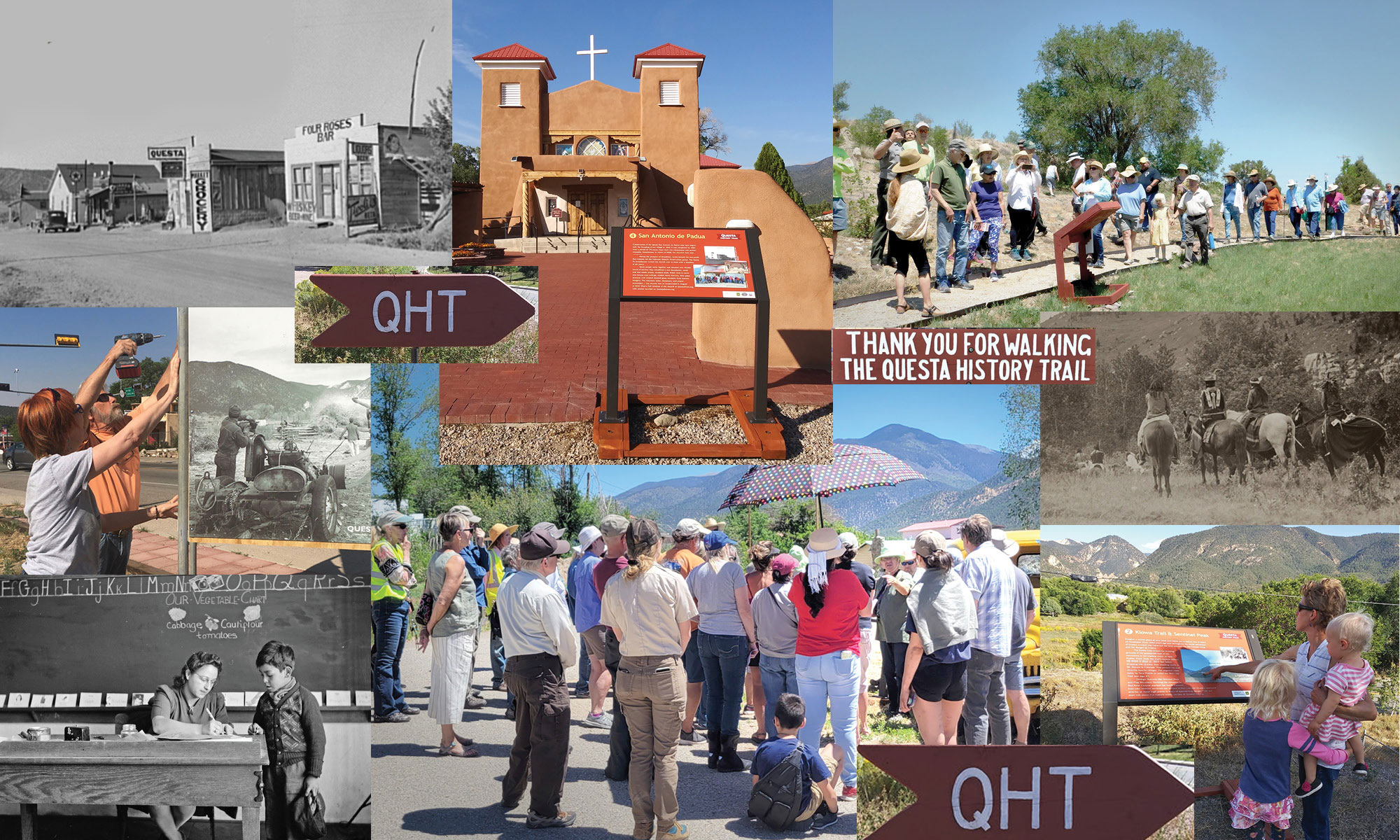The practices described below may or may not have occurred in Questa. The information is included here because it is of interest, and is easily researched online. Most of these practices have been documented, historically, within Taos County.
As the name implies, the Hermanos Penitentes are men. These are local and independent organizations with the chief officer, the Hermano Mayor (elder brother) having absolute authority and ruling to the end of his life. The membership is made up of three degrees, each with its own initiation ceremony and duties–the First Degree taking part in devotional practices, the Second Degree allowed to hold office, and the highest, the Third Degree strongly encouraged to practice ritual self-punishment.
Initiation ceremonies take place during Holy Week, mainly from Ash Wednesday to Good Friday. Candidates are brought to the often-hidden morada, with its small cross above the door the only indication of it as a place of worship. After a series of questions, answers, and prayers, he is admitted. A series of ritual acts follow, from washing the feet of those present, to asking pardon for any offenses he may have made. If anyone present was previously offended by the new member, he may lash him on his bare back. The new member, like all previous members, then receives six cuts, made by a piece of flint in the shape of a cross, just below the shoulders. This wound is to be kept open for forty days.
On each Ash Wednesday, all Hermanos are expected to re-open this cut and keep it open until Good Friday. It is on Good Friday that processions take place, and ritual representations of the crucifixion. Prior to 1900 throughout New Mexico and southern Colorado, it was not uncommon for Hermanos to be publicly tied to crosses. Fifty years ago, witnesses in Taos still saw hundreds of Hermanos Penitentes, stripped to the waist and flagellating themselves on Good Friday as they followed a few chosen brethren dragging heavy crosses, maderos. Accompanying them might be musicians, and others, offering support and encouragement. These crosses were made of rough-hewn pine and were of great weight, sometimes over fifteen feet in length. It was placed over the bare shoulder with the end dragging on the ground. The road to a ritual site, usually on a hill representing Calvary, was often intentionally rocky and difficult, and the sufferer would thereby be wounded and bloodied by the time he reached his destination.
The more usual penance today is flagellation, and while rituals of the past were often large and public, these are now performed within the morada. A short whip, a disciplina, made of a braided rope of yucca or cactus, is used. It is whipped first over one naked shoulder then the other, seeking to strike a single spot in the center of the back, creating a deep wound. This self-inflicted torment is believed to be the most effective route to forgiveness and the purging of sin.
These rituals are thought to “cleanse” a participant, leaving them more generous, humble, and helpful members of their community, and connecting them to centuries of history–and often hopeful about sharing their purification practices with upcoming generations.
Resources:
http://www.library.arizona.edu/exhibits/swetc/spmc/body.1_div.34.html
http://www.newadvent.org/cathen/11635c.htm
http://www.elsantuariodechimayo.us/Santuario/Penitentes.html
https://www.huffingtonpost.com/2015/04/03/penitentes-new-mexico_n_6990204.html
